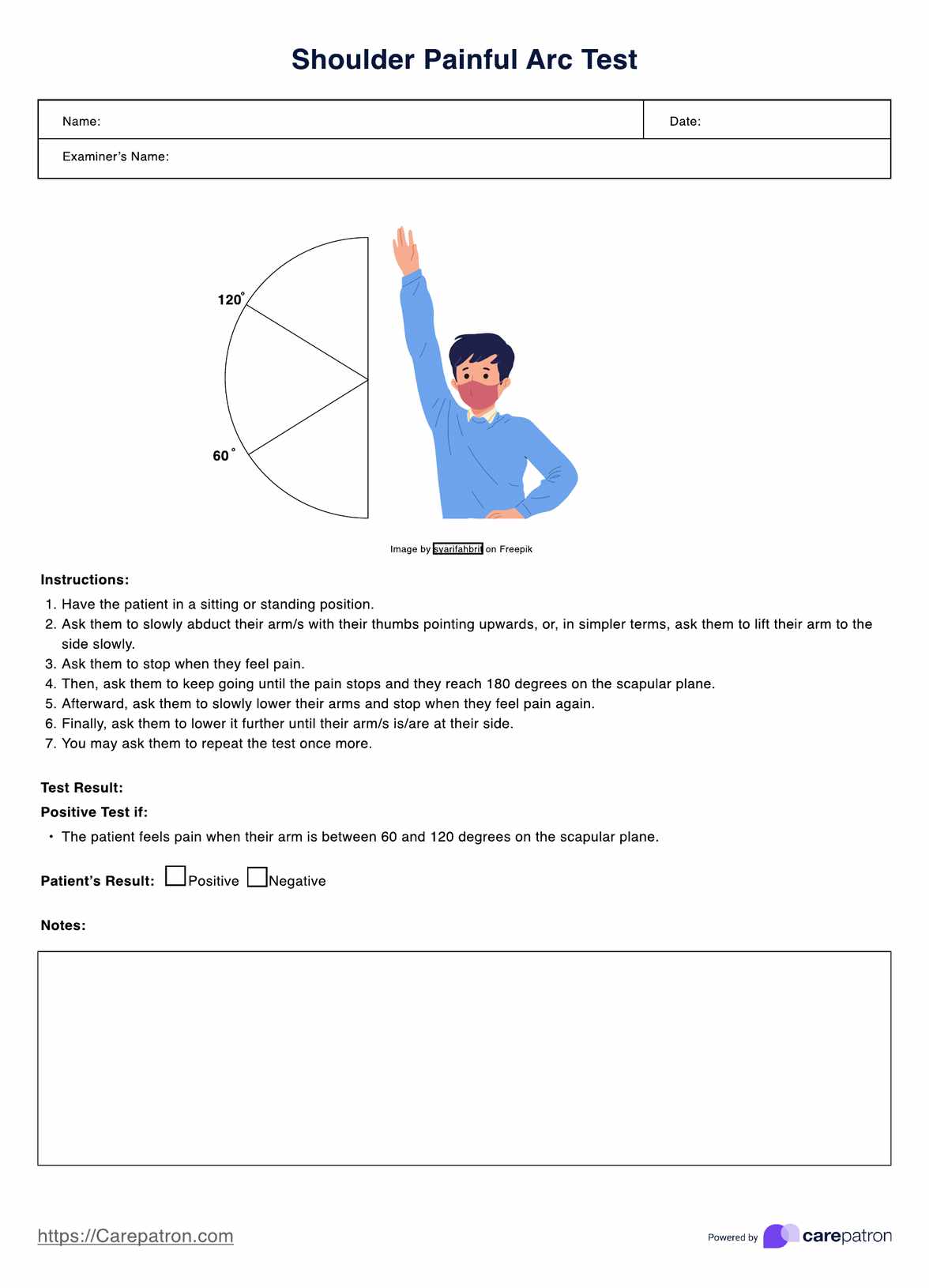Practitioners who diagnose or treat shoulder injuries or conditions, such as physical therapists, orthopedic therapists, sports therapists, and general physicians, can use the painful arc test template.

Painful Arc Tests
Identify with the painful arc test if your patient has subacromial impingement syndrome. Click here for more information and a free template.
Use Template
Painful Arc Tests Template
Commonly asked questions
They are used while the practitioner conducts the painful arc test and if the patient needs to reproduce the symptoms of a subacromial impingement syndrome.
They can be used as a template, guide, or document to take down notes.
EHR and practice management software
Get started for free
*No credit card required
Free
$0/usd
Unlimited clients
Telehealth
1GB of storage
Client portal text
Automated billing and online payments











